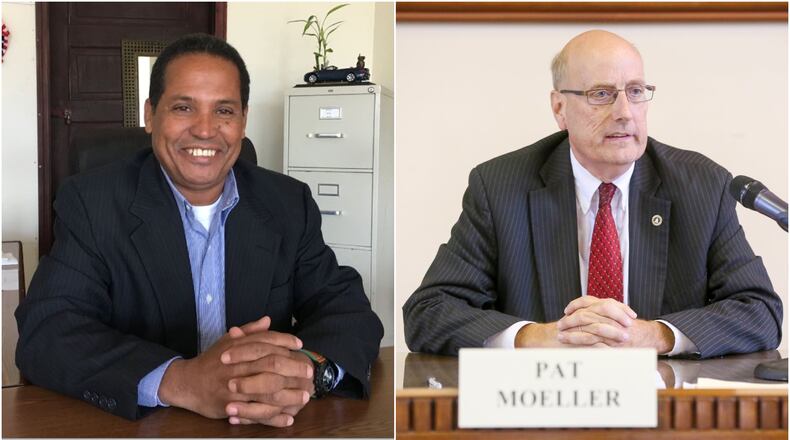Both Moeller and Batista's views on local issues can be found online in the Journal-News' interactive Voters Guide at vote.Journal-News.com. Here are their responses to three of those questions:
Q: Traffic flow is a big concern among city residents. What should be done to fix it?
Batista: "I do not think that we have big concerns about traffic flow issues in Hamilton. Like any other big city, Hamilton is faced with rush hour traffic and cargo trains that cross through the middle of the city. Besides that, Hamilton is okay in terms of traffic flow."
“The situation of trains that pass through the middle of city will be taken care of by coordinating with the cargo companies which will bring forth a positive solution. As for the future interactions between travelers, we have a transportation plan which includes a light tail transit, bike share stations, bike lanes, infrastructure signage, and traffic control devices to understand and develop an optimal transportation network.”
Moeller: "Almost every city, village, and township is faced with traffic flow issues during road, bridge, and utility improvements. Hamilton has multiple road, bridge, and utility improvement projects. Time, patience, and drivers not blocking intersections will cure those traffic flow issues. In non-road, non-bridge, and non-utility improvement situations, our city administration has conducted surveys, has partnered with state of Ohio departments on traffic flow studies, and has simply changed traffic light timing using a "gut feel" for what needs to be done. We need to hear from citizens about the location of certain traffic flow issues; we know the obvious ones."
RELATED: With 1,000 new jobs on way, Hamilton targeting rebirth
Q: What three issues are most important to you in making Hamilton better?
Batista: "The three most important issues in our administration will be to address quality of life, job creation, and public transportation."
“A) Quality of Life: which includes a safety program with the elimination of the drug trafficking, prostitution, and home invasions. As well as, working closely with the Board of Education to develop strategies that will create Quality Academic Seats and increase the four-year high school graduation rate. B) Job creation: with an incentive program for all businesses particularly those who hire Hamilton residents and we also we will pay attention to our high school graduation rate and school report cards. C) Public transportation: which can significantly help the people with any diver impediments to travel to work or other personal needs and it will help the environment.”
Moeller: "We need to continue having a creative, results oriented city administration and team that is responsive to our residential citizens and business citizens."
“We need to create more jobs and retain the jobs that we have now. I addressed that issue above in greater detail.”
“We need to continue strengthening our neighborhoods and business districts; this can be accomplished in many ways including growing our middle class and increasing home ownership.”
Q: Do you favor seeking a tax levy to improve condition of Hamilton streets?
Batista: "No, I do not favor seeking a tax levy because there are other ways to get money to improve the condition of Hamilton's streets without touching property taxes. One of the main reasons is because we want to keep property taxes as low as possible. However, yes, I want to improve the conditions of Hamilton's streets."
Moeller: "Yes, for so long as (1) the tax levy has a sunset provision so that voters need to vote to approve a continuation of the levy after four years and (2) the voters can see the scheduled list of streets to be improved prior to the levy election."
About the Author
